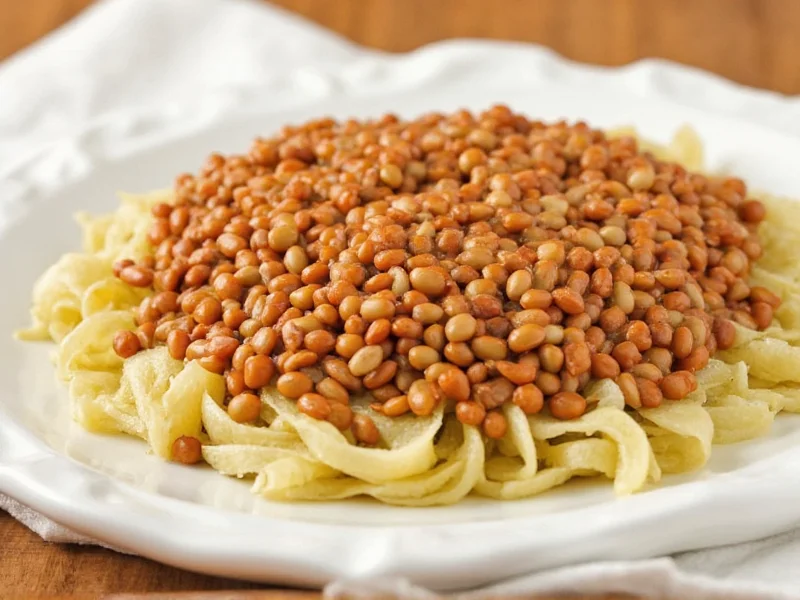Yes, lentils are naturally wheat-free. As legumes (not grains), lentils contain no wheat proteins and are inherently safe for wheat-free diets. However, cross-contamination can occur during processing if facilities handle both wheat and lentils. For those with celiac disease or severe wheat allergies, certified gluten-free lentils provide the safest option.
Understanding Lentils and Wheat: The Fundamental Difference
Lentils belong to the legume family (Fabaceae), while wheat is a cereal grain from the grass family (Poaceae). This botanical distinction is crucial for dietary planning. Lentils—whether brown, green, red, or black varieties—naturally contain zero wheat proteins. Their protein structure differs completely from wheat gluten, making them inherently wheat-free.
Many people confuse wheat-free with gluten-free. While all wheat-free foods avoid wheat specifically, gluten-free foods avoid all gluten-containing grains (wheat, barley, and rye). Lentils are naturally both wheat-free and gluten-free, but processing considerations affect their safety for strict gluten-free diets.
Nutritional Benefits of Wheat-Free Lentils
Lentils provide exceptional nutritional value for wheat-free eating patterns. A single cooked cup (198g) delivers:
| Nutrient | Amount per Cup | % Daily Value |
|---|---|---|
| Protein | 17.9g | 36% |
| Fiber | 15.6g | 56% |
| Folate | 358mcg | 90% |
| Iron | 6.6mg | 37% |
These nutritional properties make lentils an excellent wheat-free protein source, particularly valuable for vegetarians and those following restricted diets. Their high fiber content supports digestive health, while their low glycemic index helps maintain stable blood sugar levels.
Wheat-Free vs. Gluten-Free: Why the Distinction Matters
Understanding the difference between wheat-free and gluten-free labeling is essential for safe eating:
- Wheat-free: Contains no wheat ingredients but may include other gluten-containing grains like barley or rye
- Gluten-free: Contains no wheat, barley, rye, or their derivatives (must have less than 20ppm gluten)
For individuals with wheat allergy, are lentils wheat free is the critical question. For those with celiac disease, the concern shifts to whether lentils are certified gluten-free due to potential cross-contamination. This distinction explains why some people following strict gluten-free diets seek certified products even for naturally gluten-free foods like lentils.
Cross-Contamination Risks with Lentils
While lentils themselves contain no wheat, several contamination pathways exist:
- Field contamination: If wheat and lentils are grown in adjacent fields
- Harvesting equipment: Shared machinery not properly cleaned between crops
- Processing facilities: Facilities handling both wheat products and lentils
- Packaging lines: Shared equipment without thorough sanitation
Studies show that up to 10% of naturally gluten-free products test positive for gluten due to cross-contamination. For those with celiac disease, even small amounts (as little as 50mg of gluten daily) can cause intestinal damage. This explains why are lentils safe for celiac disease depends on processing standards, not just the natural composition of lentils.
Choosing Safely Processed Lentils
To minimize risk when incorporating lentils into wheat-free or gluten-free diets:
- Look for certified gluten-free labels from recognized organizations (GFCO, NSF)
- Choose brands that specify dedicated facilities or tested below 20ppm gluten
- Consider organic lentils which often have stricter processing protocols
- Buy from companies that publish third-party testing results
- Rinse lentils thoroughly before cooking to remove potential surface contaminants
Retailers increasingly offer certified gluten-free lentils in both dried and pre-cooked formats. When shopping, check packaging for statements like "Processed in a dedicated gluten-free facility" rather than relying solely on "gluten-free" claims, which don't guarantee absence of cross-contamination.
Incorporating Lentils into Wheat-Free Meal Planning
Lentils offer remarkable versatility in wheat-free cooking. Try these approaches:
- As a meat substitute: Brown lentils hold shape well in wheat-free shepherd's pie
- In soups and stews: Red lentils dissolve to create natural thickening without flour
- As salad base: Combine cooked lentils with vegetables and vinaigrette
- Lentil flour applications: Use in place of wheat flour for pancakes or flatbreads
- Sprouted lentils: Increase nutrient availability and digestibility
For those exploring wheat free legumes options, lentils pair well with other safe ingredients like quinoa, rice, and vegetables. Their earthy flavor complements herbs and spices, making them adaptable to various cuisines while maintaining dietary restrictions.
Special Considerations for Different Dietary Needs
Different health conditions require varying approaches to lentil consumption:
- Wheat allergy: Pure lentils are generally safe, but check for wheat-based additives in pre-seasoned products
- Celiac disease: Opt for certified gluten-free lentils to avoid cross-contamination risks
- Non-celiac gluten sensitivity: May tolerate regular lentils but could benefit from certified options
- Irritable bowel syndrome: Start with smaller portions of red lentils, which are lower in FODMAPs
When asking are red lentils wheat free, the answer remains yes—they're naturally free from wheat proteins. However, processing determines their safety for strict gluten avoidance. Always consult a healthcare provider when making significant dietary changes for medical conditions.











 浙公网安备
33010002000092号
浙公网安备
33010002000092号 浙B2-20120091-4
浙B2-20120091-4